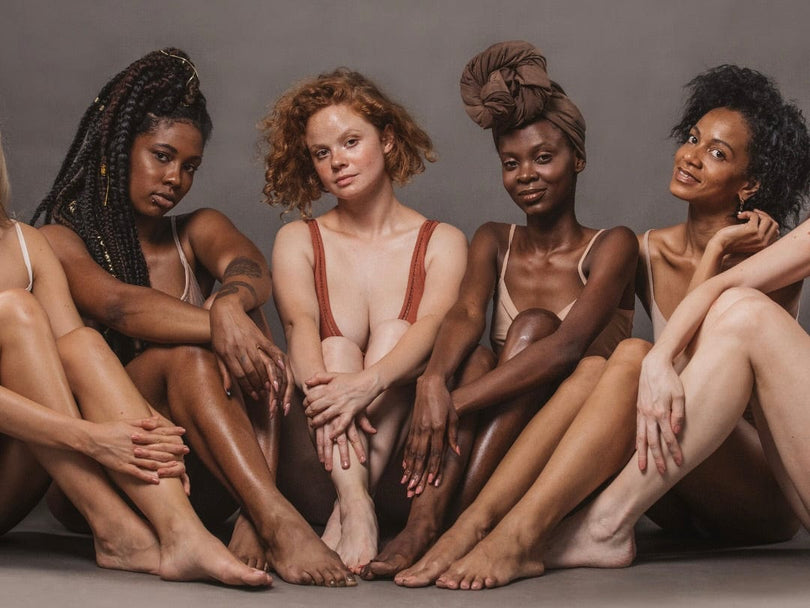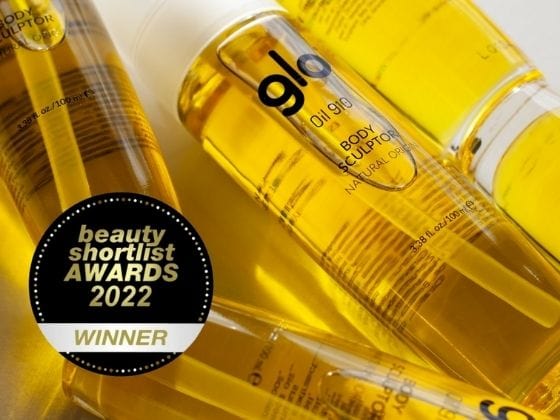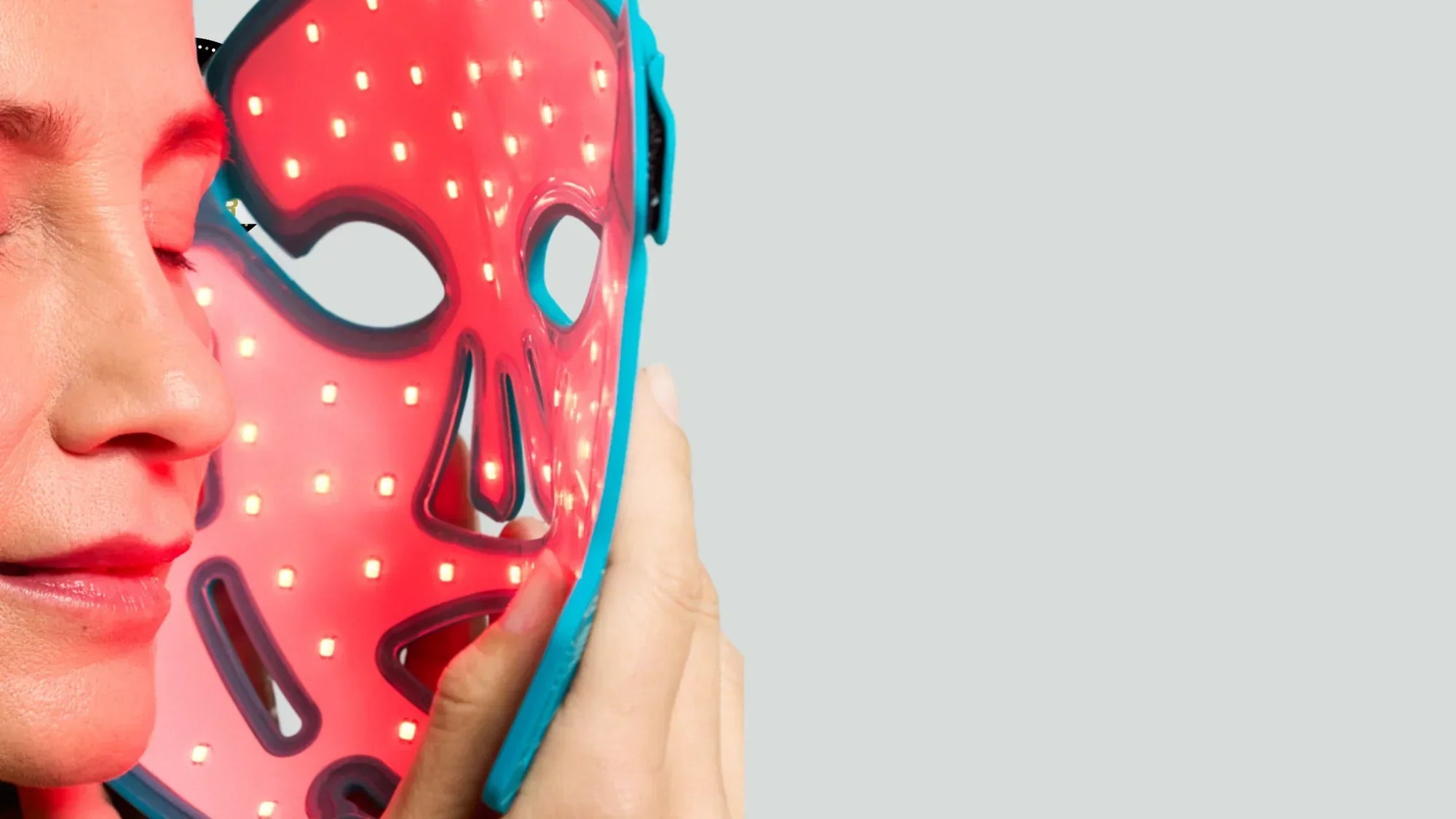LED masks are a major innovation for at-home skincare, as clinical evidence has shown that LED phototherapy can effectively treat a wide range of skin issues — fine lines, wrinkles, acne, hyperpigmentation — all without invasive methods. Moreover, it’s a treatment compatible with others like injectables, radio frequency, etc.
When selecting a facial LED mask for home use, there are some key factors to consider in order to pick a high-quality device. Not all devices are the same, and it’s essential to find one that is optimized for treating your specific skin needs, that is effective and safe.
Below, we review the most relevant qualities an LED mask of high standard should have.
1. Wavelengths
Wavelength is the first factor to consider when choosing an LED mask. There are many different wavelengths across the electromagnetic spectrum, and not all are beneficial for skin. While some wavelengths are clinically proven to improve specific skin problems, others can even be harmful.
To protect your skin, it is fundamental to choose an LED mask that uses clinically studied wavelengths. If a device does not reveal the specific wavelengths it uses, we recommend avoiding it. In skincare, prevention is better than cure.
According to Dr. Bleker, a certified aesthetic dermatologist:
“I always recommend opting for LED light wavelengths/colors that have the most clinical data backing their use, such as blue, red, and near-infrared. There is not much evidence supporting yellow, amber, etc.”
Some of the wavelengths of light that have been scientifically shown to favor skin health include:
-
Red light (633 nm)
Clinical research has shown that the 633 nm red light wavelength reduces inflammation, pigmentation, and redness. It also stimulates cellular repair and increases circulation, yielding a more luminous and vibrant complexion. The 633 nm wavelength is present in our Glo Mask and Glo Face devices. -
Near-infrared light (830 nm)
Near-infrared light targets deeper fibroblast cells that contribute to collagen and elastin formation. The result is firmer, smoother, younger-looking skin. The 830 nm wavelength has been clinically proven to aid facial skin rejuvenation. This wavelength is used in our Glo Mask and Glo Face devices. -
Near-infrared (1072 nm)
This deeper-penetrating wavelength is ideal for thicker skin (e.g. on men). Combined with 633 nm and 830 nm, the 1072 nm wavelength has been clinically shown to rejuvenate skin, especially in the under-eye area. It is included in our Glo Mask device. -
Blue light (415 nm)
The 415 nm blue light wavelength acts at the cellular level to neutralize and eliminate bacteria that cause acne on the skin’s surface. It has been shown to help treat mild to moderate acne. The 415 nm wavelength is present in our Glo Face device, which is designed to treat and prevent breakouts. -
Green light (568 nm)
The 568 nm green wavelength has less scientific evidence compared to the others, but when combined with red and near-infrared light, it may help improve discoloration in the skin. The 568 nm wavelength is included in our Glo Face device to help unify skin tone and reduce pigmentation issues.
Combined LED Phototherapy
Some photo-therapy devices combine wavelengths to more effectively treat skin issues like signs of aging. Dr. Bleker notes:
“A combination of red and near-infrared light, such as in Glo devices, is ideal for treating mature skin. It’s been shown that red light (633 nm) boosts cellular energy, which essentially triggers cellular renewal to reduce inflammation, redness, and correct pigmentation and photodamage. The near-infrared light (830 nm) offers the strongest benefits for wrinkle reduction, as it penetrates deeply into the skin and acts on fibroblasts, stimulating collagen and elastin production for firmer, more youthful skin.”
2. Clinical Research
Many LED devices available today are not backed by clinical data demonstrating their safety and efficacy. As mentioned before, it is important to verify that any LED device is legitimate and supported by clinical studies before buying it.
Most LED devices on the market lack their own clinical data supporting their claims, so if you can’t find any clinical research backing a device, we would not recommend investing in it.
The phototherapy technology used in Glo devices has been utilized in over 40 peer-reviewed clinical studies. In addition, to ensure its effectiveness, the Glo Mask LED mask is certified as a medical device, undergoing rigorous safety controls and specific clinical tests that support its anti-aging results.
3. Emission, Intensity, and Proximity to the Treatment Area
The skin must absorb the optimized wavelengths of light to gain the full benefits of LED therapy. To guarantee optimal absorption, it is crucial to consider the power, intensity, and proximity of the device to the skin. An analogy that helps understand this concept is imagining these factors as if it were a flashlight shining on a wall: the closer it is to the wall, the brighter and more intense the light will be.
Keeping this in mind, we recommend choosing an LED mask made of high-quality flexible medical material rather than a rigid mask. This ensures the device can mold to the curves of the treatment area and absorb the maximum amount of emitted light. Rigid LED masks cannot flex and may leave parts of the face untreated, leading to uneven results.
It’s also important to consider the straps and fastening elements of the device, as they may affect how well the device fits the treatment area.
Our Glo Mask phototherapy device uses medical-grade flexible silicone, and is adjustable both to the face and the head, allowing the LEDs to sit directly on the skin. This means the masks deliver a high concentration of light with lower power, providing safe and uniform results.
-
Glo Mask emits a power of 30 mW/cm², enabling it to reach 18 J after the 10-minute treatment.
-
Glo Face emits a power of 42 mW/cm², which allows skin cell activation in just 1 minute per zone.
4. Number of LEDs
A higher number of LEDs is not necessarily better in a phototherapy device, since the irradiance of each LED distributes light across the skin.
However, when LEDs are spaced too far apart, the concentration of light decreases and can compromise treatment results.
What matters is properly calibrating the number of LEDs per cm² and the spacing between them, in order to provide sufficient irradiance that ensures uniform results. The current number of medical-grade LEDs in the Glo Mask device is 132, achieving an irradiance of 30 mW/cm².
5. FDA & Safety Authorizations
The Food and Drug Administration (FDA) in the U.S. reviews medical devices to determine which are safe and effective. The FDA’s approval or clearance is an important quality marker to look for in phototherapy LED masks, because it verifies the manufacturer’s claims. While it is mandatory for products marketed in the U.S., it is not always required for those offered in Europe.
Still, many LED devices marketed in the U.S. today do not have FDA authorization (nor their international equivalents), so one cannot be certain whether they are safe for your skin.
At Glo, safety and efficacy are of utmost importance. Our Glo Mask LED mask is not only FDA-cleared and CE certified, but also certified as a Medical Device in Europe, and includes a specific ocular safety test.
Selecting an LED Mask for Your Needs
We hope we have helped you in selecting an LED mask that suits your needs, because an LED mask is an investment in your skin’s health. Over many years of use, it pays for itself, so it’s worth examining all available options thoroughly.
Beyond being an investment, a high-quality, clinically proven LED mask can help reduce cost in other aesthetic and cosmetic treatments, so it’s worth choosing one that guarantees both safety and efficacy.

















